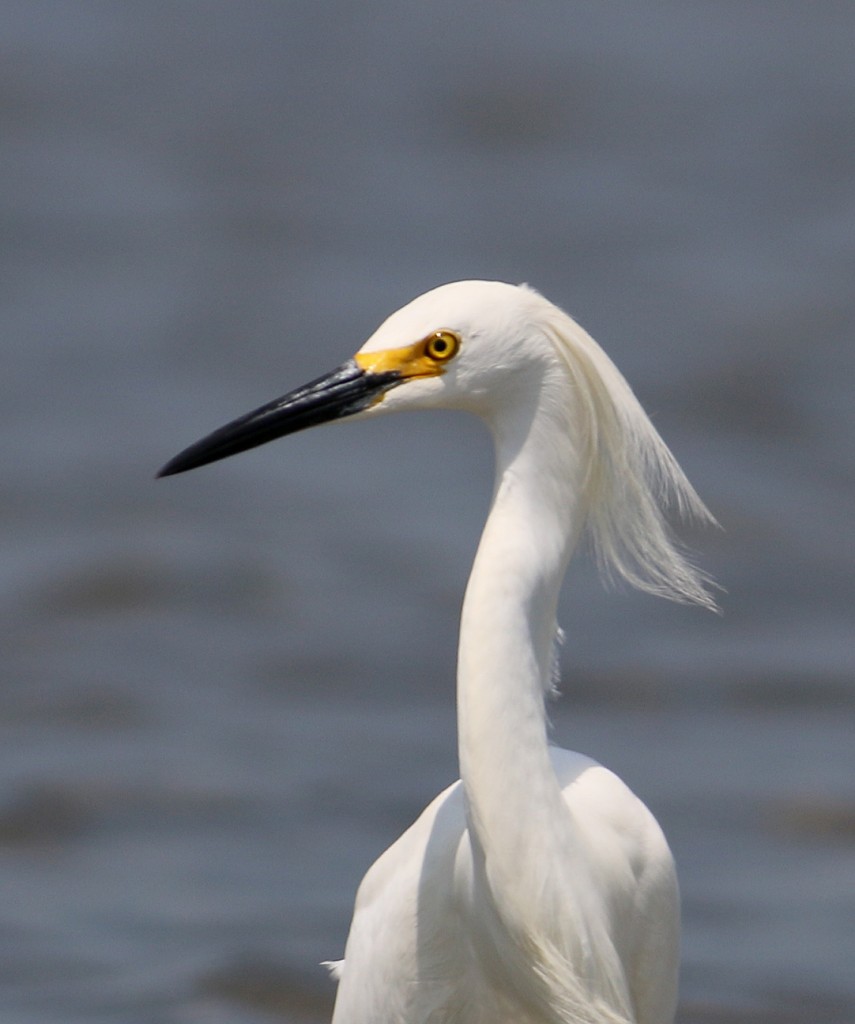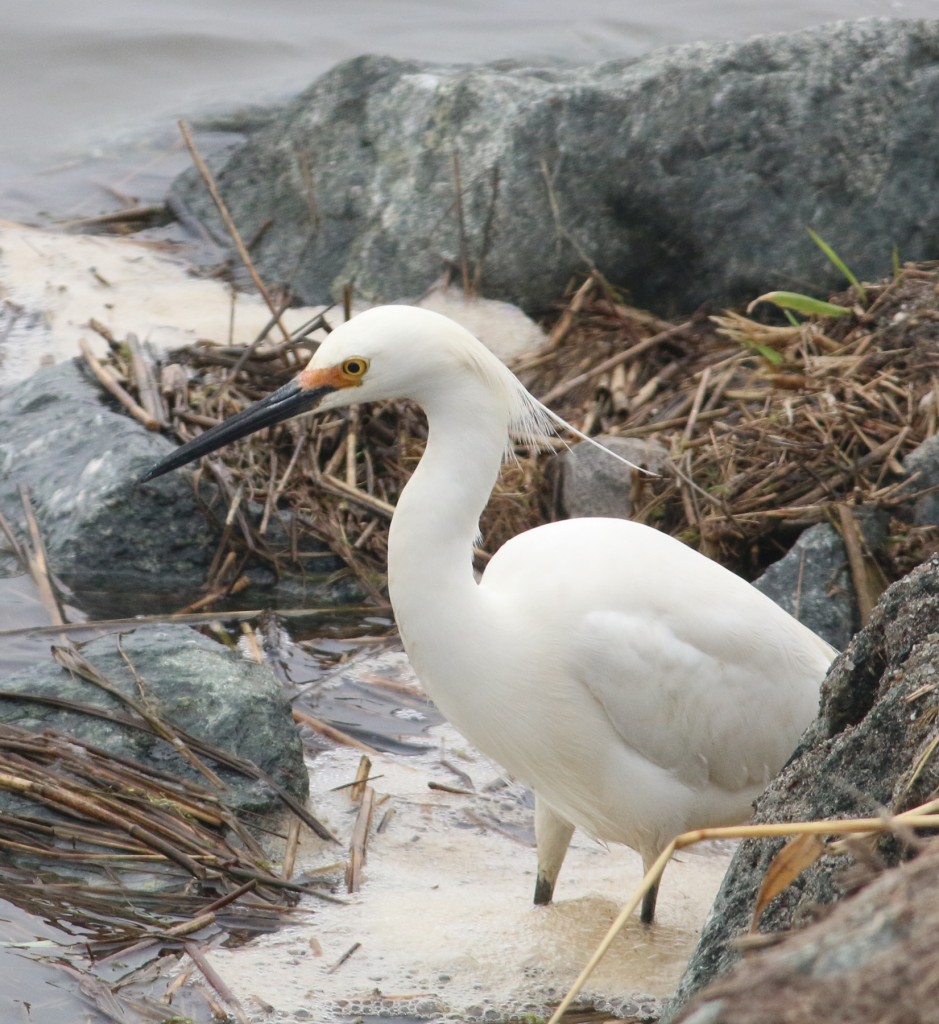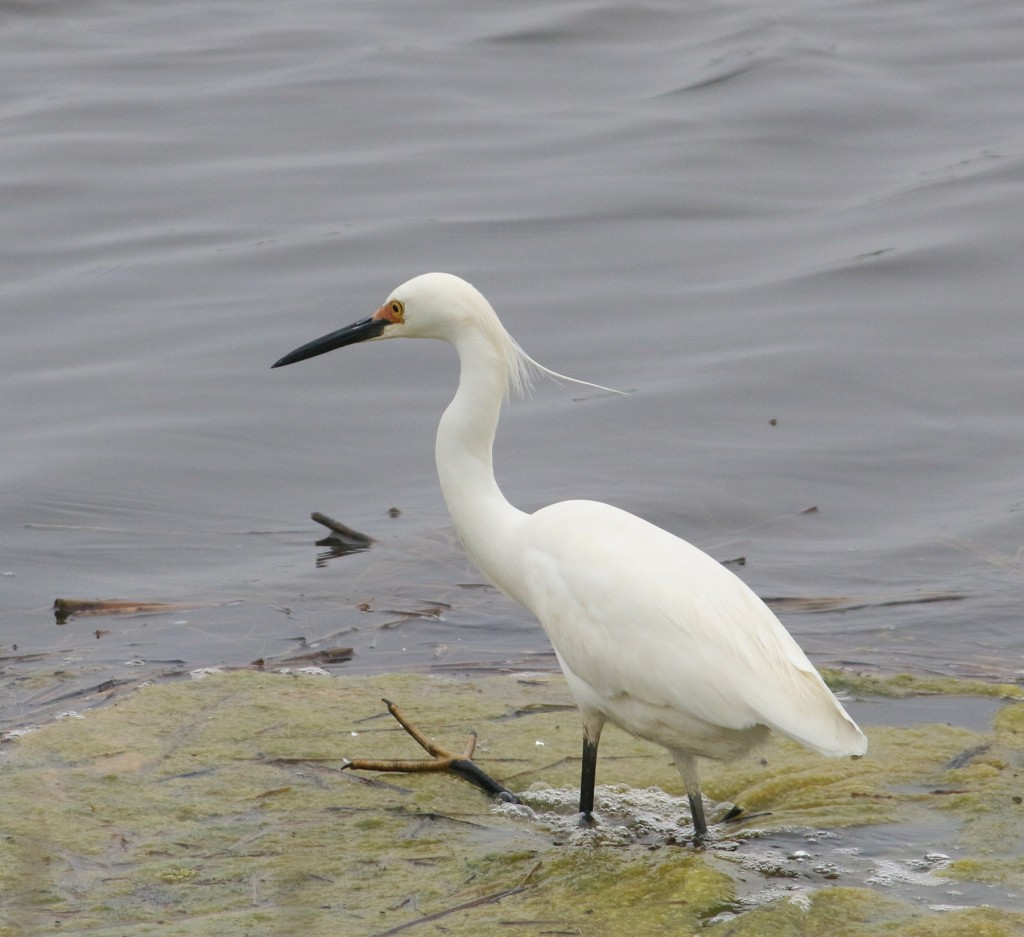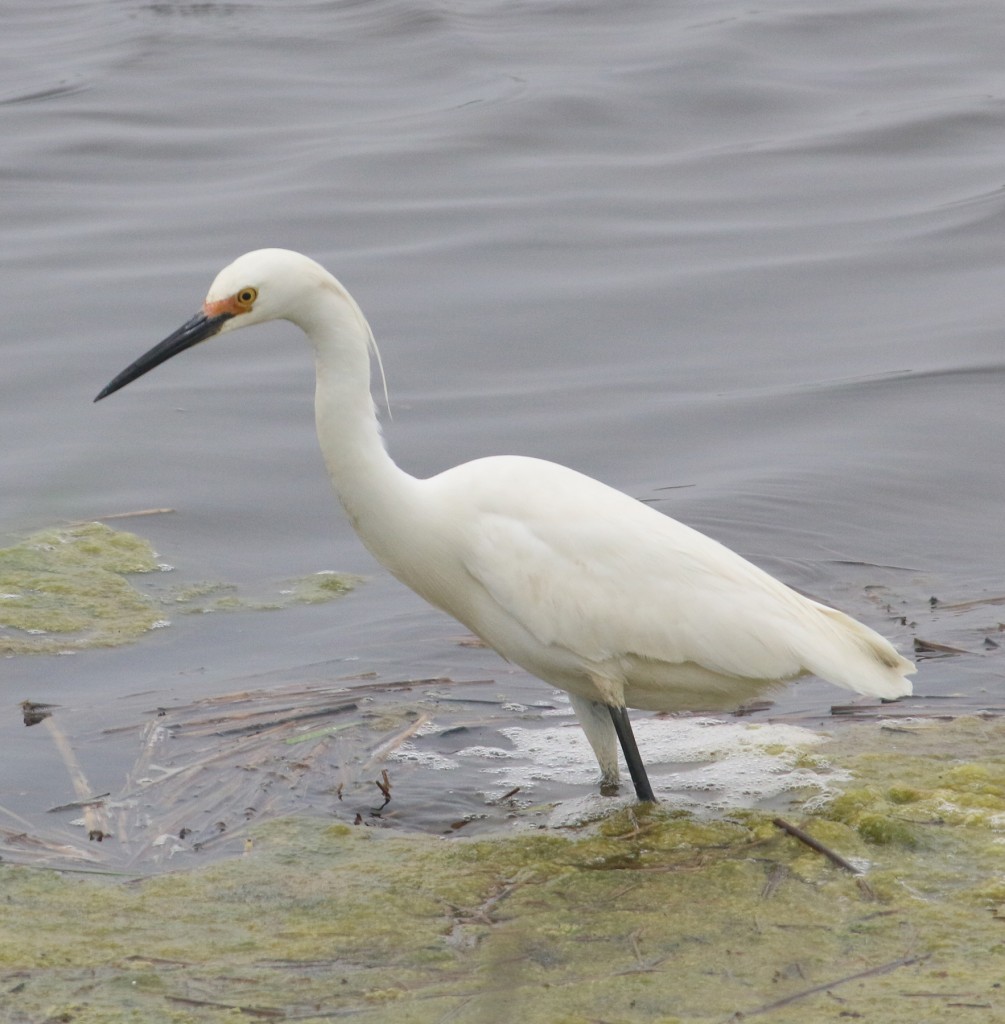Jeanine and I went to Brig in today’s mist and rain, and near the end of the loop we found some egrets close to the drive with gorgeous bright red lores, very different from their usual bright yellow non-breeding-season color. I snapped a few photos.

Here’s a Snowy Egret from last summer, with its yellow lores that are more typical of this species, as seen throughout most of the year.

Here’s a Snowy Egret from today in breeding plumage. Look at how red its lores are. Wow. Note that it has a typical cluster of shaggy, frilly plumage on back of its head and upper neck.
Then we noticed another bird with lores that were more salmon-colored. I snapped a few photos of that bird too, figuring it would be a nice intermediate color for a blog entry on lore color. After I got home I noticed that this second bird had a single long plume, which immediately called to mind Little Egret.

Our first view of the second bird, with its long stiff plume extending well beyond a frilly mane. The lores are not nearly as rich as the ‘standard’ Snowy Egret shown above.

Here’s the second bird again, with its single long plume and salmon-colored lores, and showing the color of its toes.

The second bird in textbook side view. How about that long plume? Have you ever seen that feature on a Snowy Egret?
Could this be another Little Egret? (click here for the story of our encounter with New Jersey’s first and only Little Egret) Or maybe it’s an aberrant Snowy Egret? Or could it perhaps be a hybrid? To answer this question I needed to do a bit more investigation to learn more about the fine details that distinguish Little vs. Snowy Egret, and after reading more I still don’t know the answer. Apparently nobody really knows the answer.
So here’s the story as I see it. Snowy Egrets, which are a New World species, are difficult to distinguish from Little Egrets, which are an Old World species. Except that Little Egrets have started spreading to the Caribbean, where they have bred in Barbados since 1994, and they now are seen in Trinidad and Tobago, the Bahamas, and Antigua. Some of that population presumably now migrates north with Snowy Egrets, resulting in occasional sightings in the northeastern US. Snowy Egrets have yellow lores in non-breeding plumage that turn deep red when they are breeding, along with a cluster of lacy plumes on back of the head and upper neck. Little Egret has lores that range from grayish to a salmony-color (or should it be salmonish?) and in breeding plumage they have two long filamentous plumes without the cluster of lacy plumes. Other features of Little Egret, such as slope of the head and length of the bill, seem very subjective and dependent on camera angle to me, while others, such as overall size, neck length, and leg length require a side-by-side comparison with a Snowy (which we didn’t have with this solo bird), so I won’t dwell on them here.
So now we have a problem. The bird that we saw has both the lacy cluster and a single stiff filamentous plume. Is it a Snowy-Little Egret hybrid or simply a Snowy Egret with an odd plume? Here’s where opinions differ, with no definitive answer to that question (see here and here). Some experts seem to believe that the combination of long plumes and clustered feathers is evidence of hybridization, which is certainly a reasonable explanation. Others believe that these long plumes occur in Snowy Egrets at a low frequency, party due to them being seen in places like Texas in the 1990s, and now occasionally in California, locations where hybrids are not likely. A particularly interesting specimen was seen in Colorado with two long plumes, no frilly plumes (a combination expected for Little Egret), but with bright yellow lores, which are inconsistent with Little Egret. This bird was considered to be an aberrant Snowy. That is very interesting, and suggests that the long plumes can arise in Snowys at some low frequency. It therefore might not be so unusual for them to appear on a bird with the lacy plumes too.
It is interesting that in April and May of this year Yong Kong spotted as many as three egrets at Brig with these hybrid characteristics. Presumably our bird is one of Yong’s that has now transitioned to having salmon-colored lores. Harvey Tomlinson spotted several similar ‘hybrid’ egrets at Brig in previous years.
Although we don’t know as much as we would like to know about these birds, the bird-to-bird individual variation is the stuff of evolution in progress and sure makes it fun to look at these birds in detail. Keep your eyes and mind open.